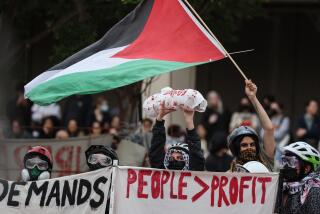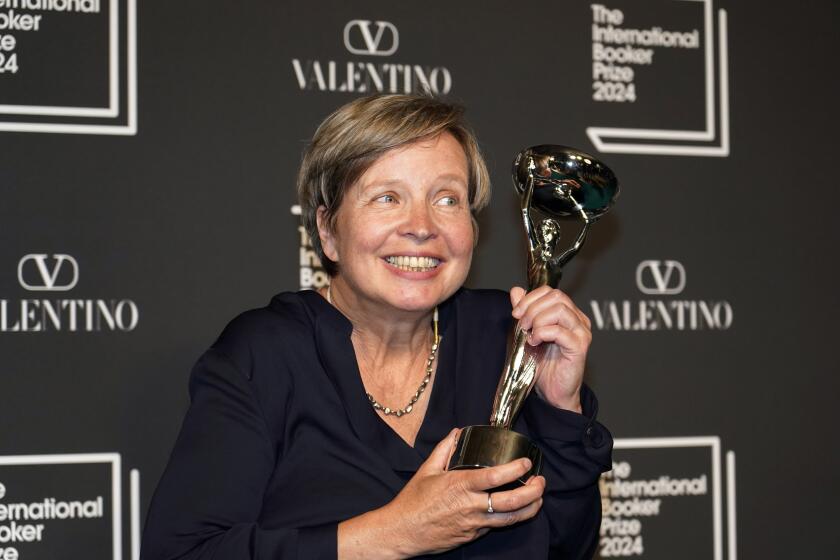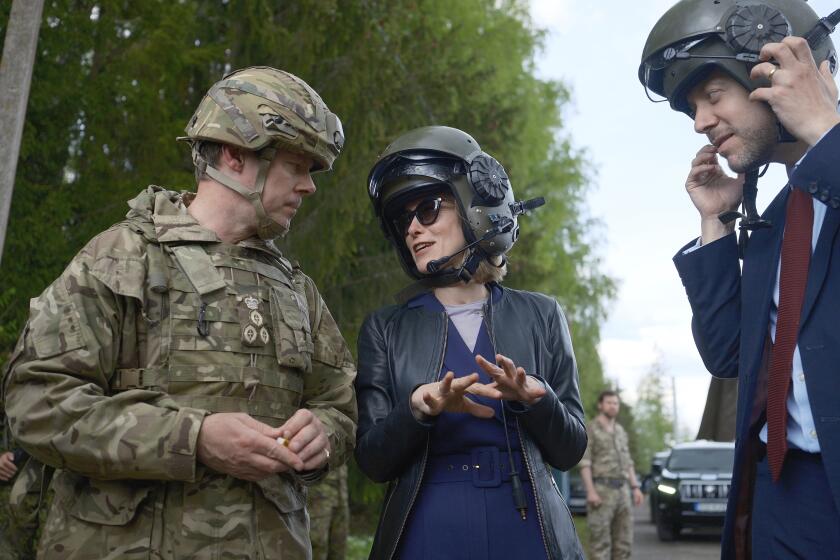CHINA: THE GIANT AWAKENS : Postscript : Maoist Heartland No More
The young woman at a small souvenir shop giggled when asked what China’s revolutionary leader, Chairman Mao Tse-tung, would have thought of her business selling Mao tie clasps and pins.
“I’m sure he wouldn’t approve,” she said with no trace of guilt. “This is something that Deng Xiaoping (China’s current senior leader) thought up.”
Private enterprise and the pursuit of profit--in contrast to Mao’s ideals of radical egalitarianism and class struggle--have seeped into every corner of China.
Even here in Mao’s old revolutionary base area, in the loessial plateau of China’s northwest, the leftist ideals that 44 years ago helped sweep Communist armies to power are now dead. Long decades of misguided political campaigns and sudden policy reversals have thoroughly discredited the old ways.
Like vast areas of China’s hinterland, Yanan is falling behind as coastal and urban regions gallop forward, powered by more than a decade of Deng’s market-oriented reforms. But new winds of change are blowing even here.
“In the past, we Yanan people were conservative in our thinking. The problem was fear,” explained Du Shuming, head of Baiya village, on the outskirts of Yanan. “After (last year’s) 14th Party Congress and Deng Xiaoping’s famous southern speech, people’s thinking gradually became more relaxed. People had been afraid of getting hurt from policy changes . . . like in the past, when people were attacked as ‘capitalist roaders.’ ”
Du noted that it was largely this fear that has caused his region to fall further behind areas such as Guangdong province. “We started reforms here 10 years ago, but we only took small steps,” he explained.
The pursuit of money has even infiltrated such holy sites of Chinese communism as Yangjialing, where Mao lived for nearly half of his 1937-1947 Yanan years.
Mao and his comrades took over traditional north Shaanxi province-style cave homes dug into earthen cliffs. These are still pilgrimage sites for schoolchildren on field trips and adults interested in revolutionary history. But those in charge seem more interested in cash than in ideology.
Visitors, for example, had until this year been barred from taking photographs inside an auditorium where the important 7th Congress of the Chinese Communist Party was held in 1945. “This is something that in the past was decided from up above,” explained Liu Yi, 24, a tour guide at the site. “Now we can free things up and let people take pictures.”
They can take them for a price equal to three cents a shot, that is.
The auditorium is controlled by the Yangjialing unit of the Yanan Revolutionary Memorial Hall, Liu explained. In the past, the memorial hall decided everything, and all Yangjialing employees drew state salaries. But the Yangjialing unit has recently been given more power to manage its own affairs.
“Now we have power on our own to hire people,” Liu explained. “If we hire them, we have to pay them. The state doesn’t pay them. So we have to impose fees. We have to figure out for ourselves how to handle this problem.”
“This is part of opening up,” said the woman collecting the photo fees with a laugh.
Liu contended that even Mao would understand.
“For sure! His goal was for the Chinese people to live a better life. The guiding thought was to make China rich, to let the Chinese people get rid of this poverty.”
“Now,” Liu said, “this method can bring this about. I think Mao Tse-tung surely wouldn’t oppose it. His original motive and starting point was wanting to let the Chinese people enjoy good days.”
More to Read
Start your day right
Sign up for Essential California for news, features and recommendations from the L.A. Times and beyond in your inbox six days a week.
You may occasionally receive promotional content from the Los Angeles Times.






